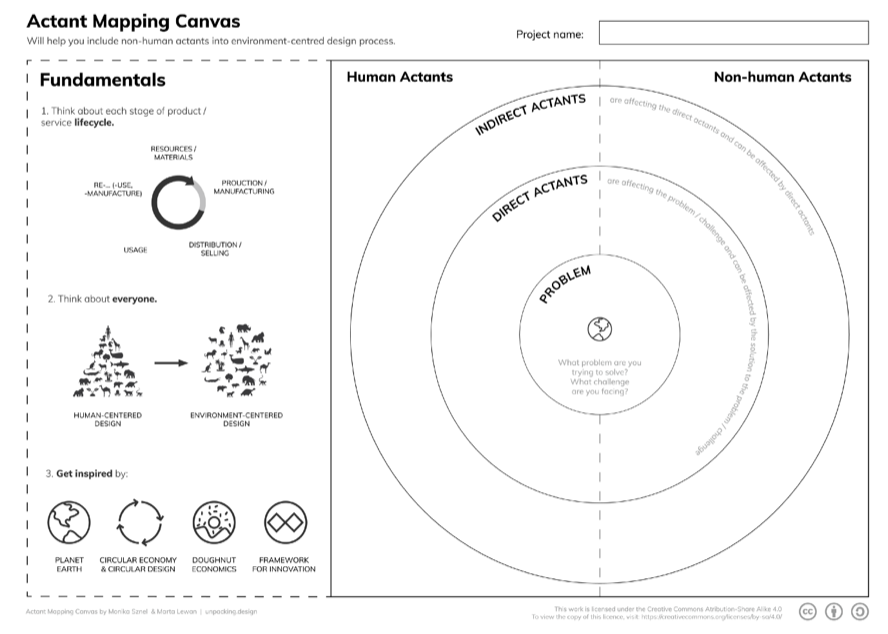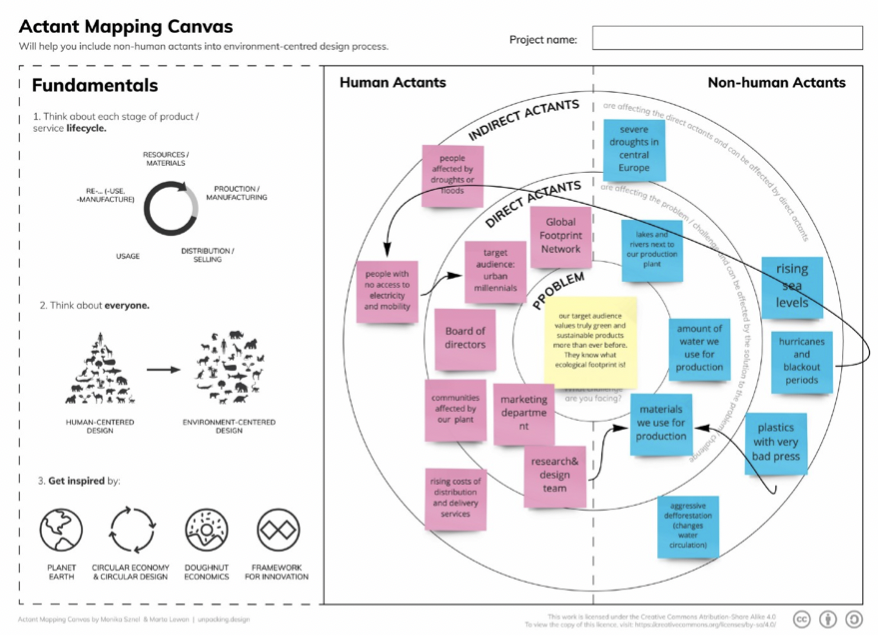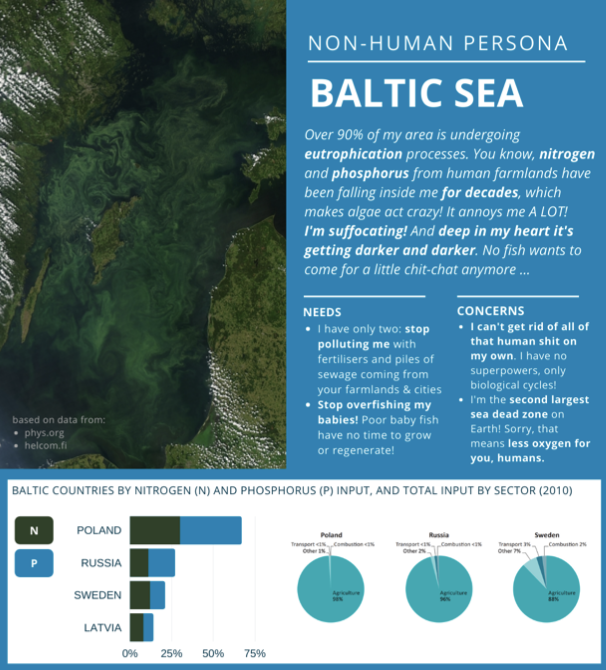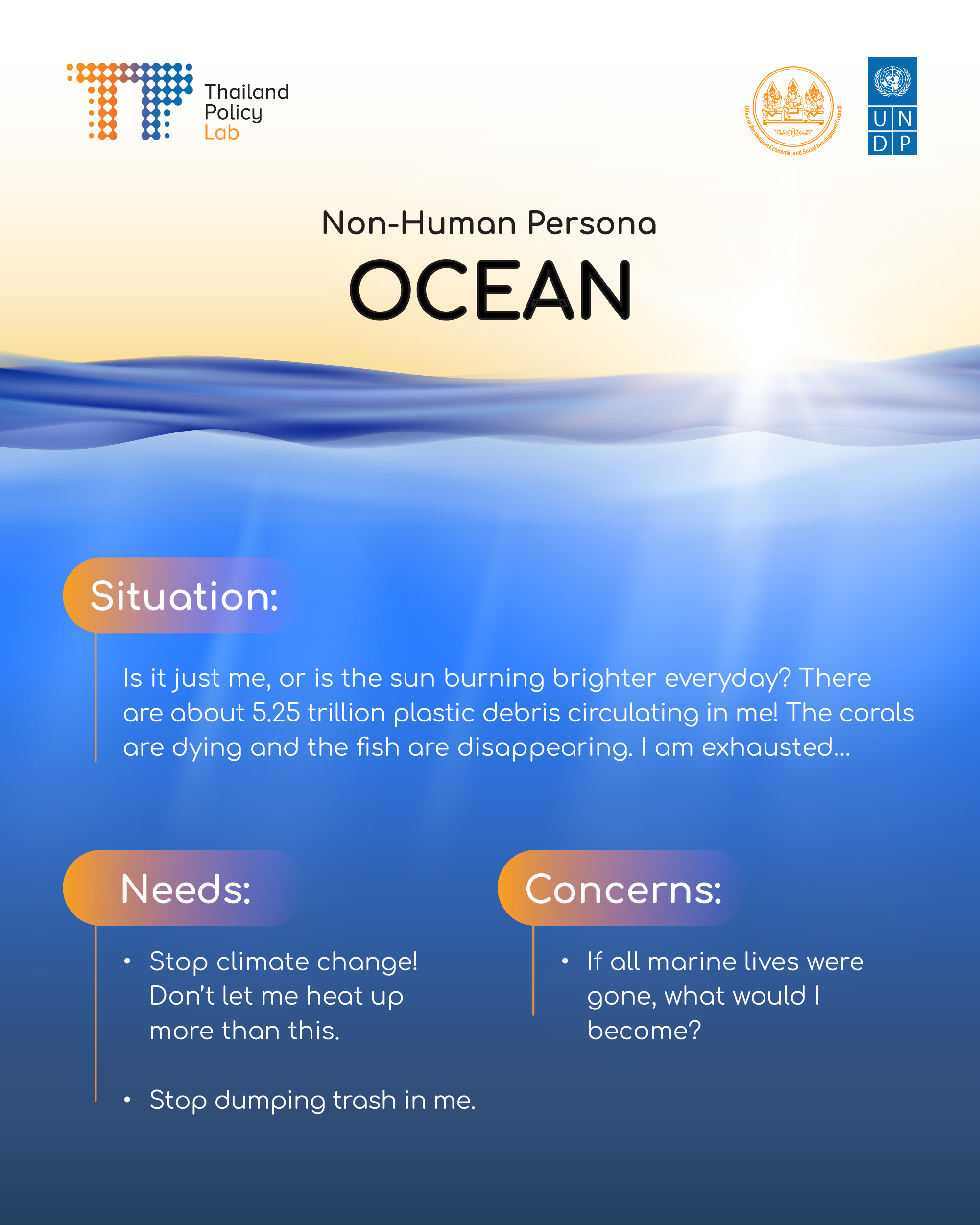Multiple tools help us determine the stakeholders or people a policy will impact, such as stakeholder mapping or creating a persona. However, to design anthropologist Monika Sznel, putting all players and actors in diagrams does not suffice. Most tools often overlook one essential group of stakeholders: non-human creatures. In this article, we will explore holistic policy toolkits: Actant Mapping Canvas and Non-human Persona.
What is Actant Mapping Canvas?
Stakeholder mapping is a human-centered design. The common perspective sees humans as the sole initiator of all actions and places other creatures in a lower hierarchy. Nature is treated as resource, not as a thing with particular needs, and thus is managed with anthropocentric thinking. Stakeholder mapping lets us know the “people” whose needs we must consider, but this conciseness is a double-edged sword as it limits the definition of “stakeholders.” This policy design only serves human needs while isolating humans from everything else. This narrow perspective fails to consider the whole, of which human is but one part. It severs “the interconnectedness of environmental, social, economic, and cultural factors shaping our Earth-based reality.” Sznel invites us to imagine “the change possible in the business strategy of a petrol retail company if its core human stakeholders would consider air quality as one of their business stakeholders.”
Proposing new thinking, Sznel and graphic designer Marta Lewan created a tool named “Actant Mapping Canvas.” She replaced “stakeholder” with “actant,” a term introduced by French anthropologist Bruno Latour in his Actor-Network Theory (ANT). Chanokporn Chutikamoltham, lecturer of History at Thammasat University, explains the theory’s main argument as:
The actor-network theory argues that agency is distributed across the network of human and nonhuman actors indiscriminately. Moreover, the actor-network theory argues against the division between society and nature, agency and structure, human and nonhuman.
In other words, humans are not the only actors in the world, and non-human entities have the agency and power to impact events. “Actant” is, therefore, a more semantically inclusive term for all actors than “stakeholder.”

>>>Download the Actant Mapping Canvas here. You can use the canvas with visual collaboration tools like Miro.
Actant Mapping Canvas lays out three layers:
- Problem/challenge
- Direct Actants (actants that could affect or be affected by the problem/challenge)
- Indirect Actants (actants that could affect or be affected by direct actants)

Example of how the canvas can visualise a problem, by Sznel
In the canvas above, the challenge for businesses is that “our target audience is conscious about truly eco-friendly products” (forcing the company to change.) Direct actants which are impacted by this trend, and will help businesses respond to the trend, include human actants (target consumer, research and design team, global footprint network) and non-human actants (amount of water used for production). Next are indirect actants, or what will affect or be affected by direct actants. Examples are deforestation (changes water circulation) and hurricanes (impacts consumers’ lives). Here we step back from the core problem and look for the interconnectedness of the environment.
What is a Non-Human Persona?
Typically, personas are fictional users of the product. In a public policy context, persona represents people who will be impacted by policy or the group whom the government is trying to assist. The UK government sector uses personas to better understand its audiences, such as their conditions, needs, lifestyle, and work behaviour. Sznel proposed that we can also create a “non-human persona”.
To create a persona for the environment, Sznel used secondary data analysis from environmental media coverage, global and national statistics, and reports from respectable organisations. She also conducted research with experts, activists, and employees in companies affecting the environment. Non-human persona must be based on real, empirical evidence gathered through a rigorous scientific methodology. After collecting data, give the non-human persona a “human voice.”

In this non-human persona for the Baltic Sea, you can see four sections: problem, needs, concerns, and statistics of contributors to the problem. The Baltic Sea is facing a eutrophication problem caused by fertilisers and agricultural wastewater. Sewage from farming increased nitrogen and phosphorus, leading to excessive algae growth in the sea. Algae overabundance produces large amounts of carbon dioxide and consumes underwater oxygen. As a result, the Baltic Sea becomes a dead zone, or an area with reduced oxygen levels in water and subsequently in the air. What the Baltic Sea persona needs are: stop polluting it, and stop overfishing so there would be more fish to get rid of algae.
Imagining a persona that is not human can be unfamiliar to human policymakers, but it is a tool and mindset worth adopting. When designing a water management policy, how can we disregard the needs of the sea, river, aquatic animals, and other non-human beings? The world humans can live in must be one in which all creatures thrive.

